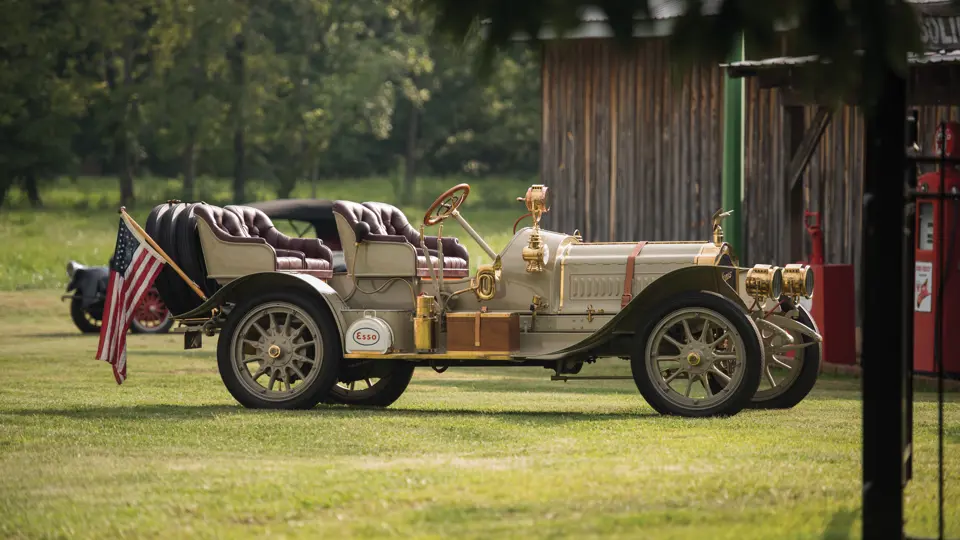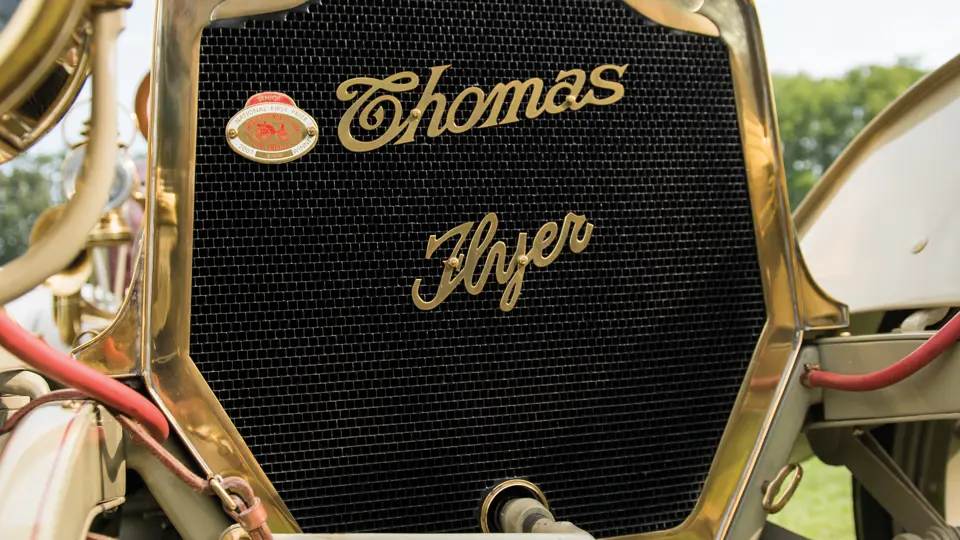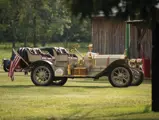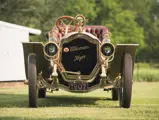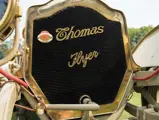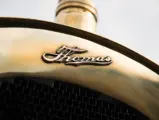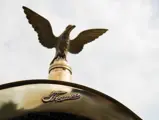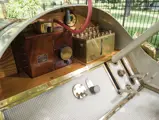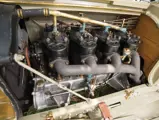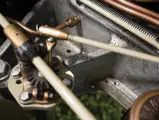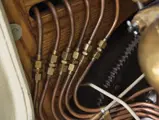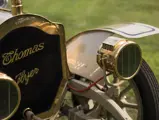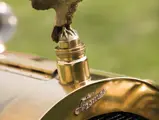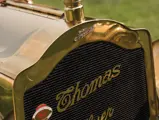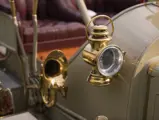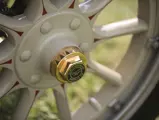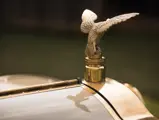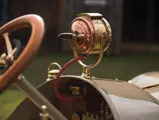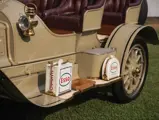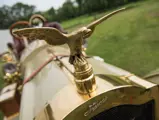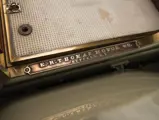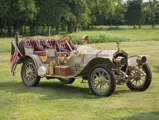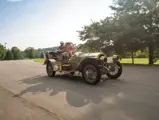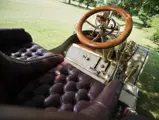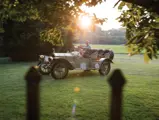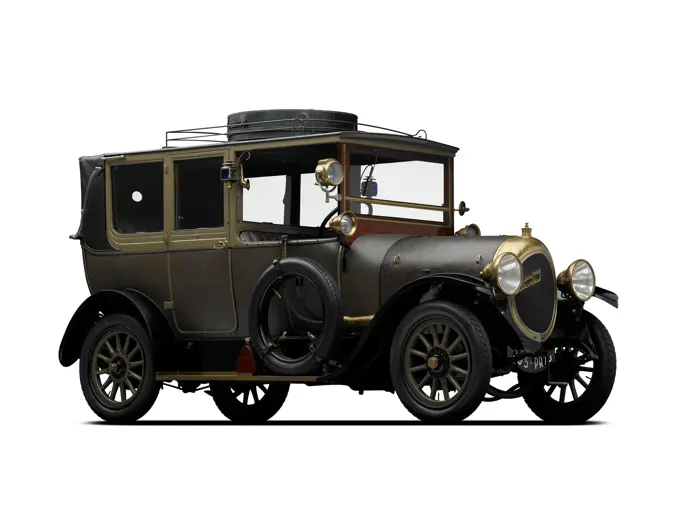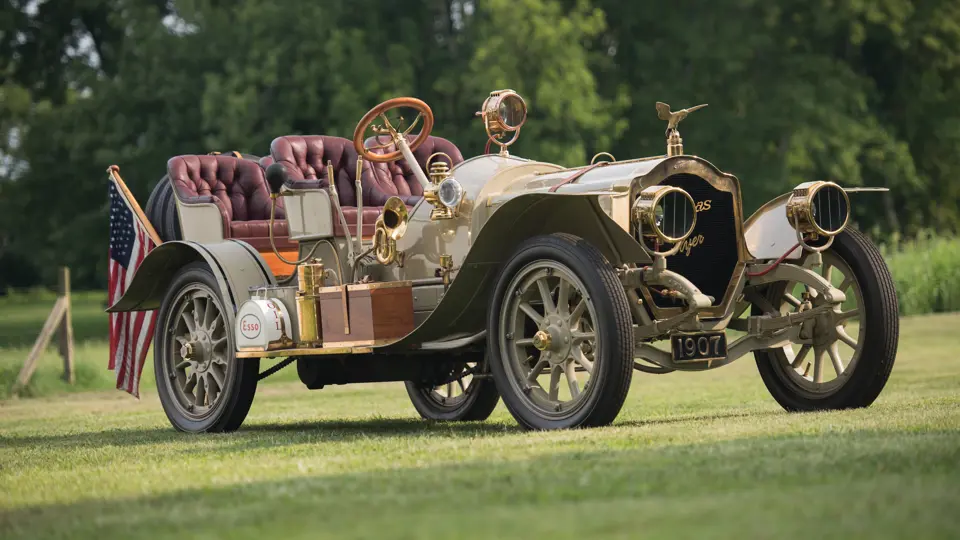
1907 Thomas Flyer 4-60 Four-Passenger Runabout
{{lr.item.text}}
$330,000 USD | Sold
The Harold Coker Collection
{{bidding.lot.reserveStatusFormatted}}
- Offered from the Harold Coker Collection
- Identical to the New York to Paris winner
- Recent engine rebuild by Paul Vaughan
- AACA National First and Senior awards
60 hp, 522.7 cu. in. inline T-head four-cylinder engine, four-speed manual transmission, solid front and rear axles with semi-elliptical leaf springs and double chain drive, and two-wheel mechanical drum brakes. Wheelbase: 116.5 in.
In 1907, the world watched with fascination as five Italian, Dutch, and French cars raced from Peking (now Beijing) to Paris, a contest won by the Italian Prince Scipione Borghese, driving an Itala. But while the Europeans had a head start in the industry, the American automobile was coming of age, so for 1908, the New York Times and the Parisian newspaper Le Matin teamed up to sponsor an encore contest from New York to Paris, by way of San Francisco, Vladivostok, and Moscow.
Six cars from four nations entered: a German Protos, a Züst from Italy, and three French cars, a De Dion-Bouton, Motobloc, and Sizaire-Naudin. The lone American entry was a 1907 Model 36 Thomas Flyer, piloted by racing driver Montague Roberts and mechanic George Schuster. The contestants started their trek from New York’s Times Square on February 12, 1908.
Like the others, the Thomas had been outfitted for its journey. Six fuel tanks together held 176 gallons of gasoline, and the car’s 60-horsepower, four-cylinder engine had been specially built. The chassis had been tested over rough terrain and reinforced where weak points were found. Transcontinental journeys in America were not new—both Winton and Packard had set records in 1903—but it was remarkable to undertake such a journey in winter.
Consistently the leader across the United States, the Thomas reached San Francisco on March 24th. It was intended that the cars go to Alaska and be driven over the frozen Bering Strait, but open water proved this to be impossible. Thus, cars were shipped to Japan for the remainder of the overland journey. Only the Züst, the Protos, and the Thomas made it past Vladivostok. The Protos left the waypoint early but was soon overtaken by the Thomas, which came upon its adversary mired in mud. Thereupon, the American team undertook the humanitarian gesture of pulling the rival to dry ground, breaking some gear teeth in the process. The Züst expired in Siberia, leaving the Protos and Thomas to duke it out across Asia and Europe in a dead heat.
The Protos finally reached Paris four days before the Thomas, but not without a bit of skullduggery. The German competitor had resorted to rail shipment for part of the journey and was penalized a full 30 days. The Thomas, with George Schuster at the wheel, made a triumphant entry to Paris on July 30th. The result was great prestige for the American auto industry and kudos for Thomas in particular. Thus, the Thomas Flyer signifies the coming of age of the early American automobile industry.
The car presented here was purchased in 2004 from the estate of Wolfgang Gawor, a German car collector who had retired to the Channel Island of Guernsey. Gawor had a deep passion for Thomas vehicles, as did other collector legends Bill Harrah and, of course, Harold Coker. Wolfgang searched the world for original Thomas vehicles and parts and meticulously assembled this 1907 vehicle to a very high standard, as evidenced by its numerous awards compiled from 2007 to 2009. The body was constructed for Wolfgang’s restoration, but nearly all chassis components are of genuine Thomas design and construction. The notable exceptions are the cylinder castings and the transmission, which were newly made to very high quality standards.
Upon acquisition, Harold Coker sent this Thomas to Paul Vaughan in Pennsylvania. Vaughan did considerable work on the engine to bring it to tip-top condition. Following this work, it received an AACA National First award, medallion number W20290, in 2007. It was invited to and shown at Amelia Island in 2009, where it was named People’s Choice, and also at the former Concours d’Elegance of the Eastern United States in Pennsylvania. It subsequently achieved AACA Senior status. It has been featured in many magazine articles, significantly in Antique Automobile, the AACA periodical, in 2007.
Painted in French Grey, it has black and gold pinstriping. The body and paint are both in excellent condition. It is upholstered in burgundy leather. Brass Dietz Majestic headlights announce its approach, illuminated by a brass carbide generator on the right running board. On the radiator cap is an eagle mascot, and there is a center-mounted Rushmore searchlight on the cowl. The engine has an electric starter, and the spark gap ignition has been replaced by a modern battery-coil system. Three rear-mounted spare tires and a 45-star American flag complete the period motif. It runs and drives very well.
This car shares the same great heritage and bloodline as the famed around-the-world Thomas. It is a very strong-running, reliable car and is one of the best examples of American automobile production of the 20th century. What this car lacks in provenance, it makes up for in beauty and universal appeal. For a high-quality driver that will reliably deliver you back from tours at the head of the line, and bring home People’s Choice awards every time, there is no better 1907 Thomas than this one.
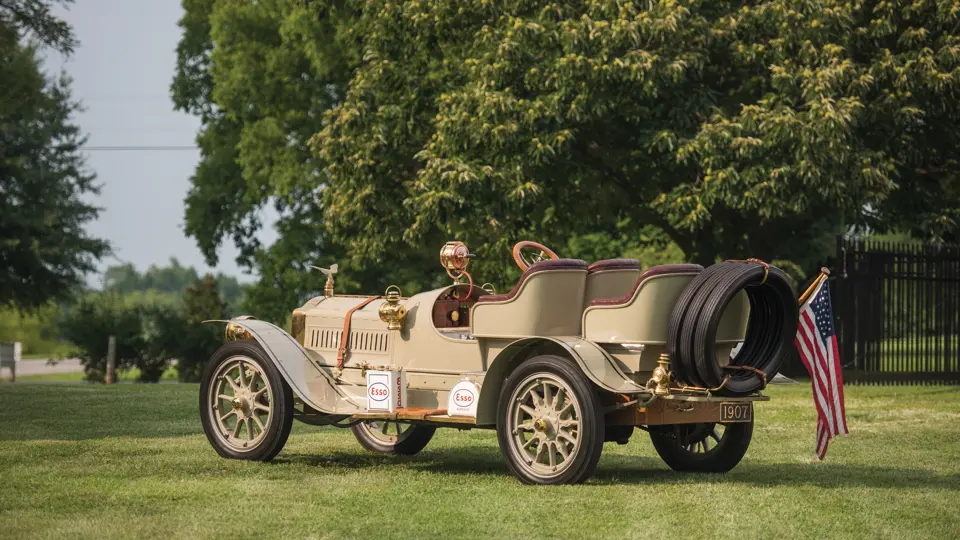

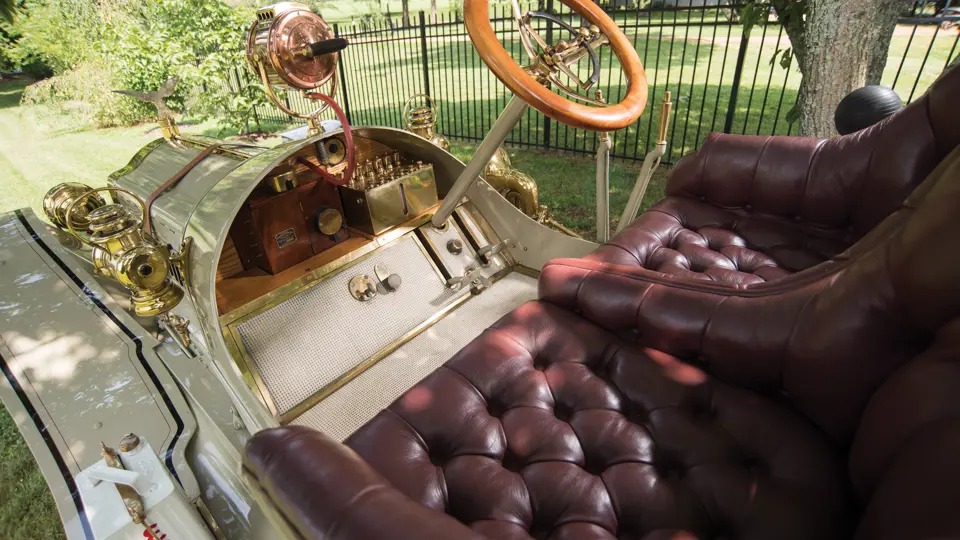

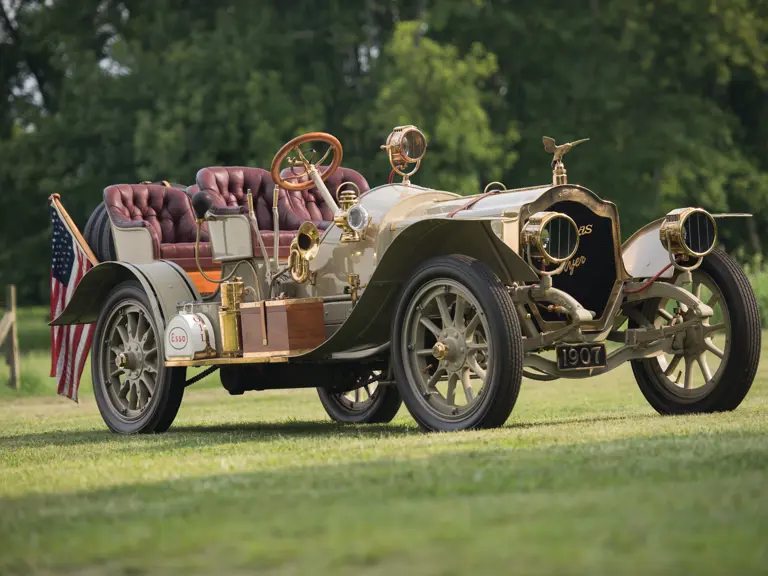
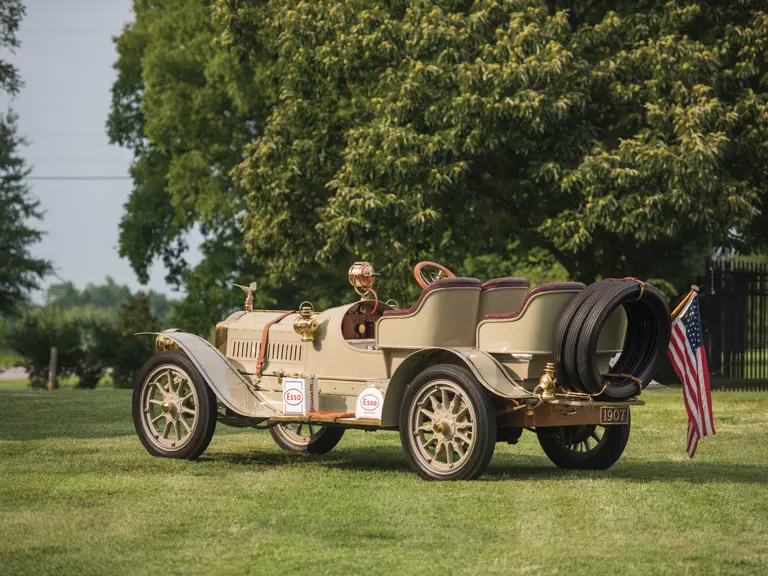
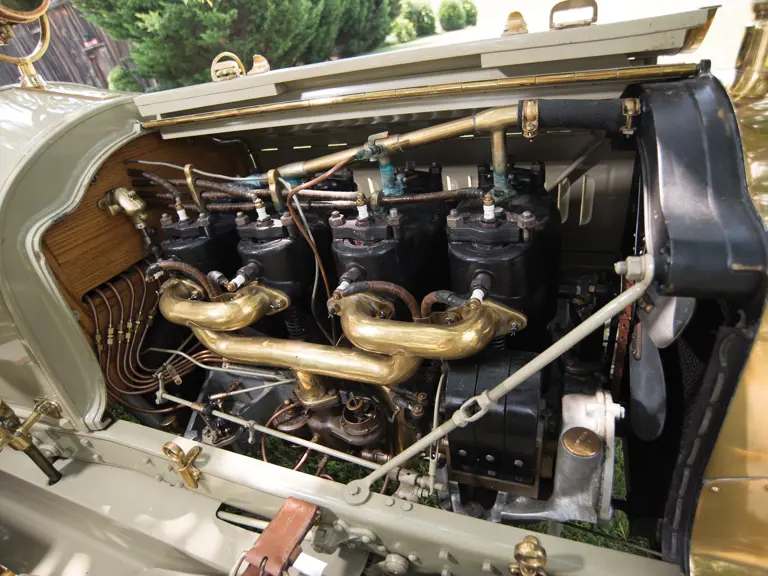
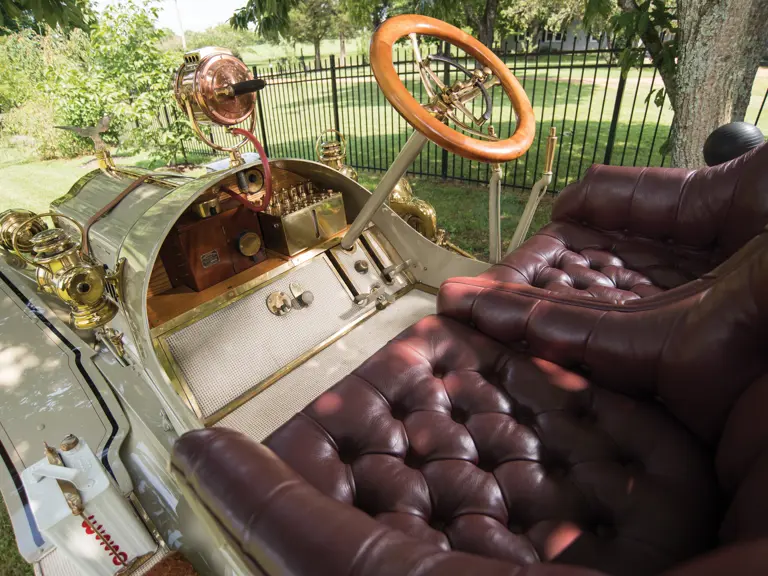
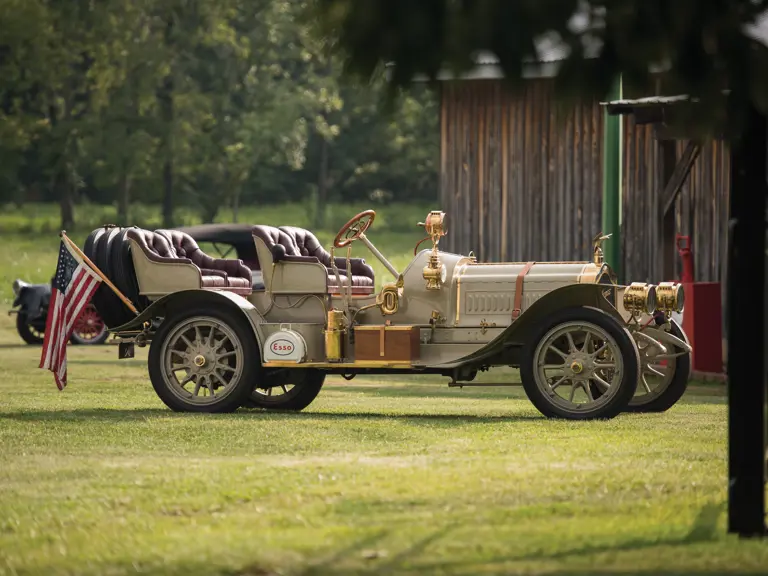
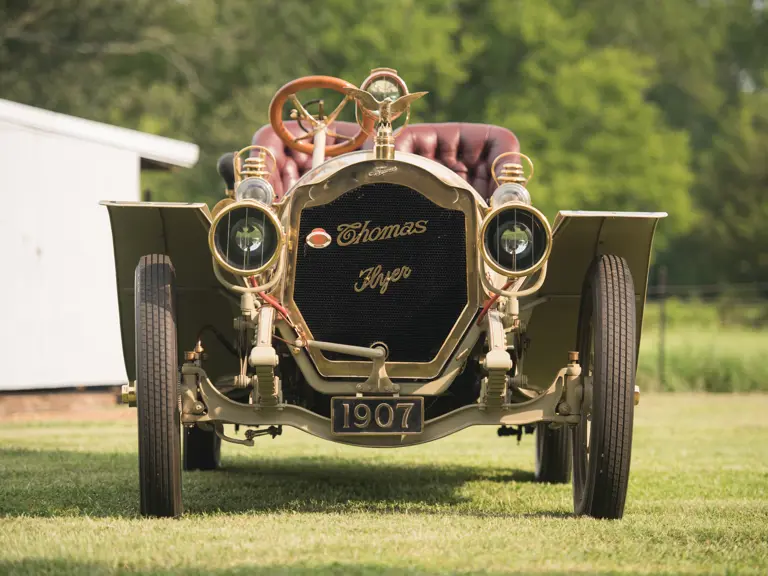
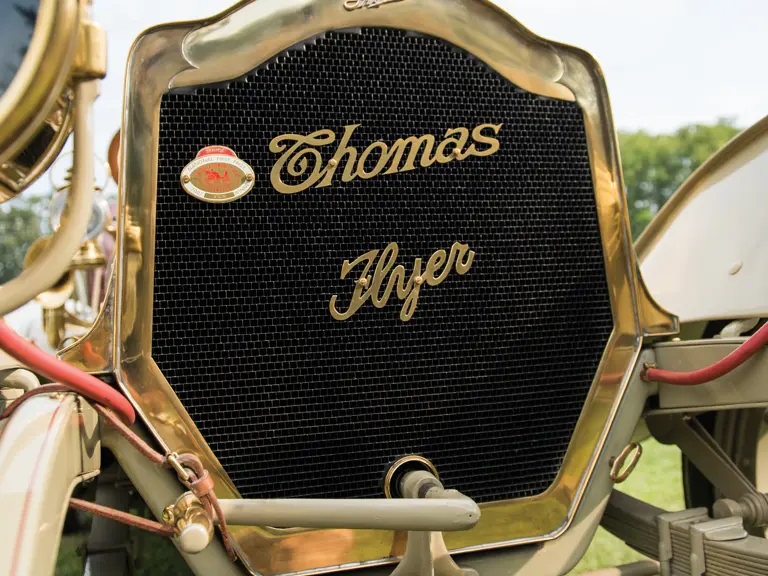
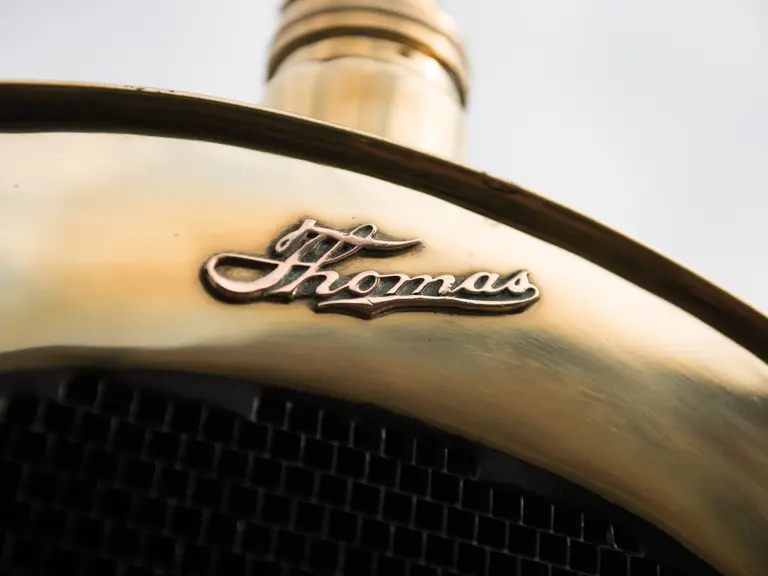
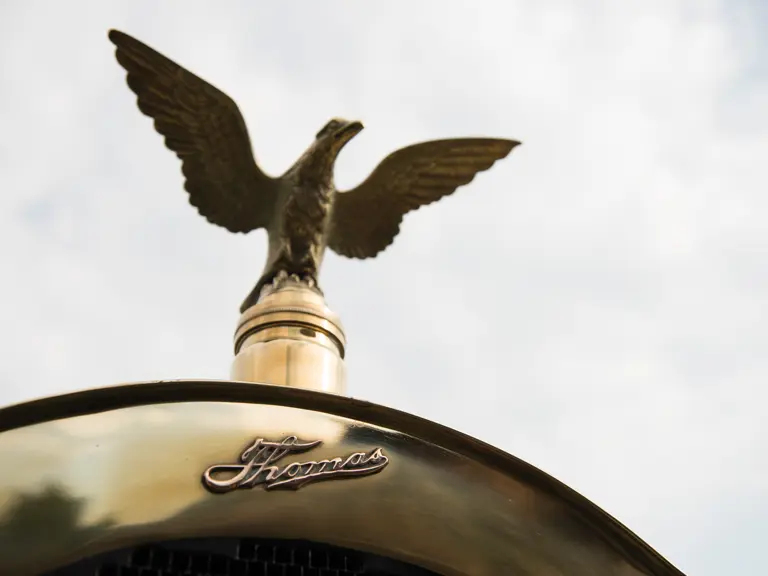
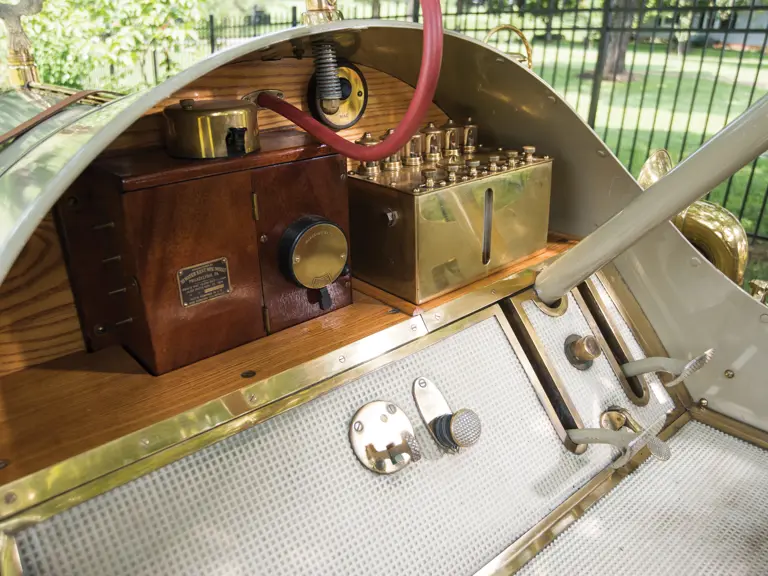

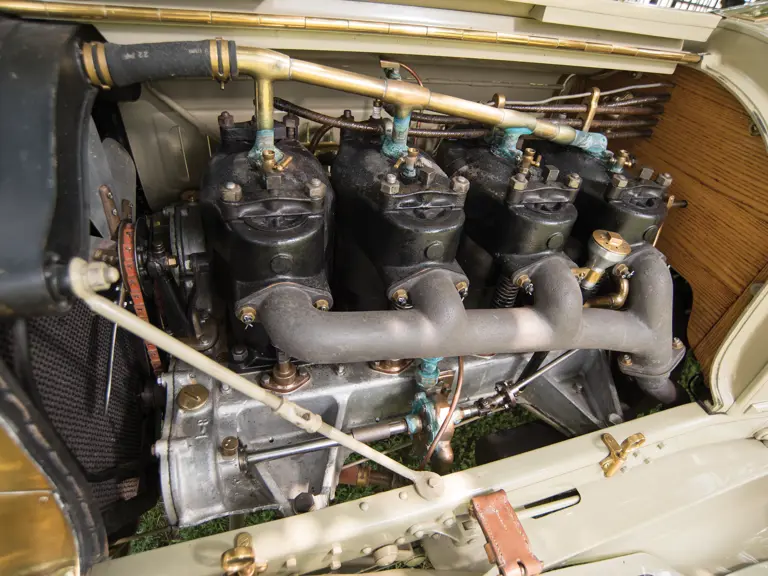
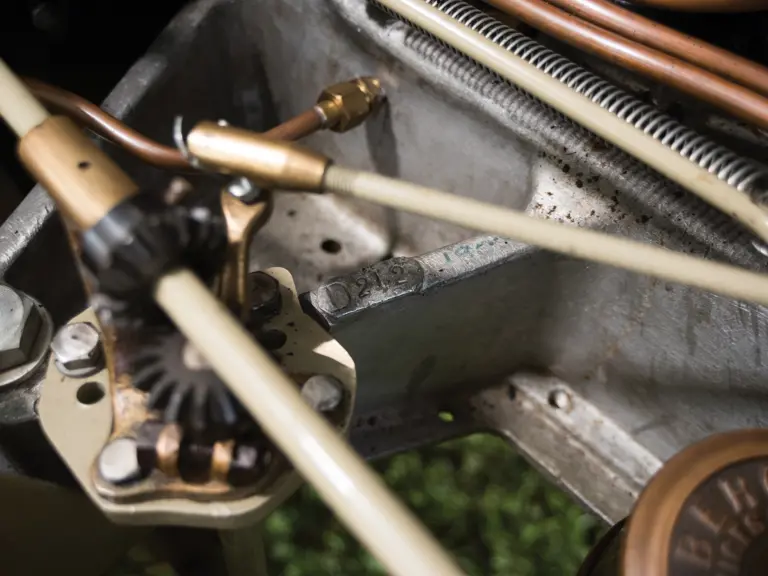
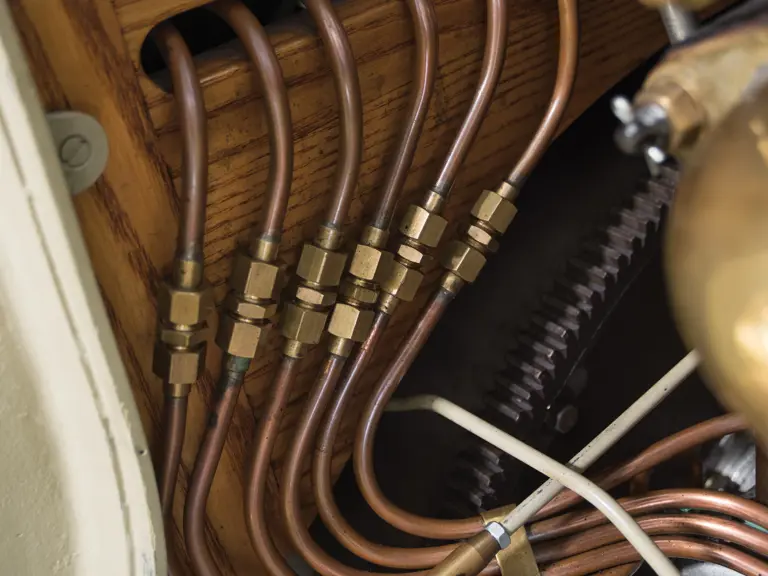

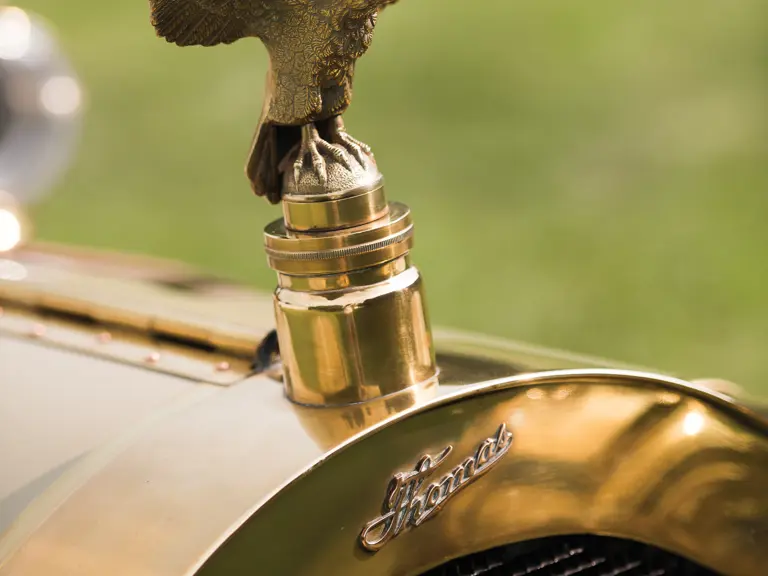
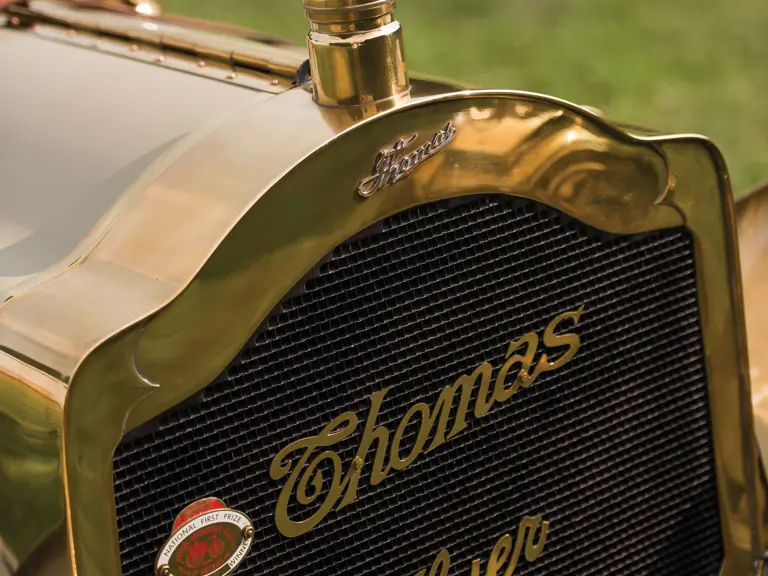
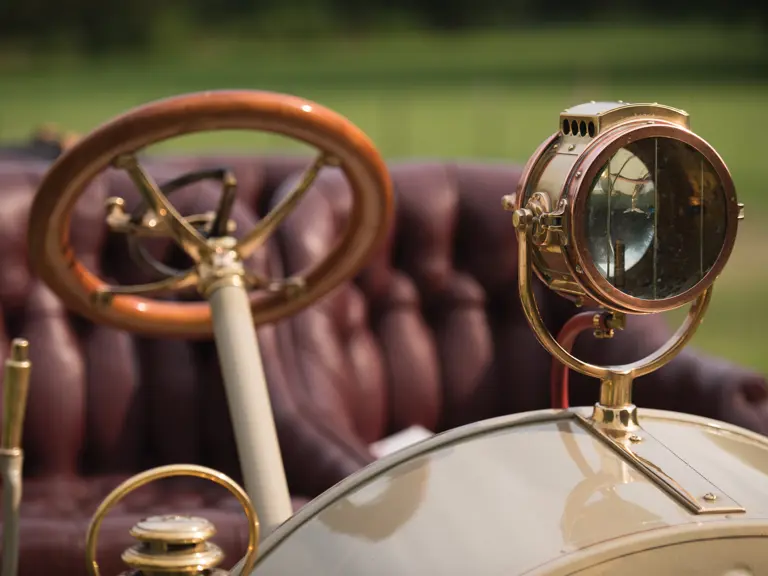
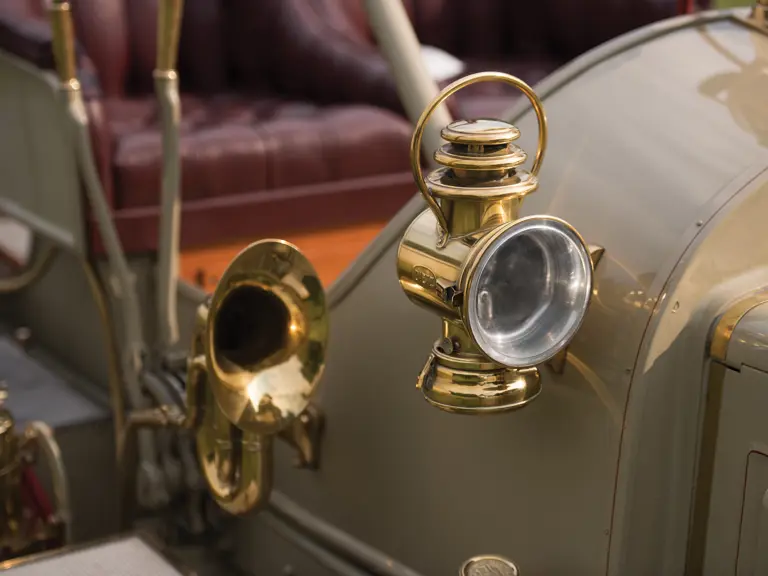
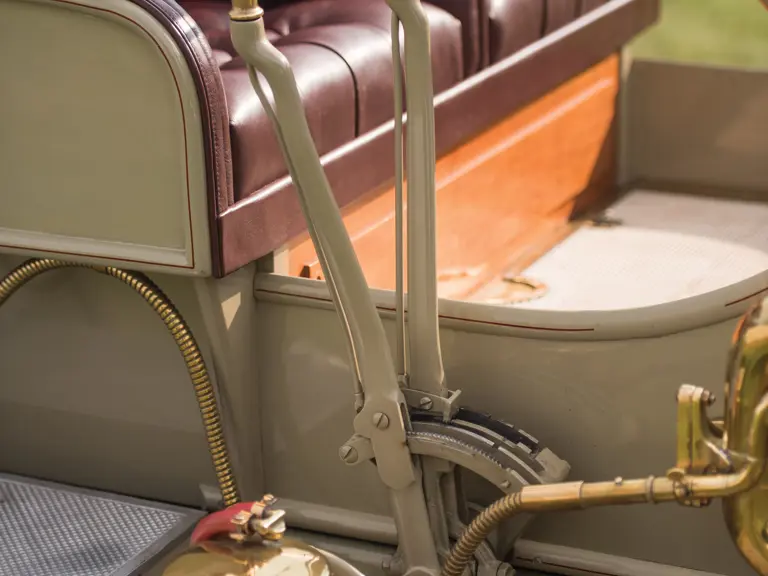
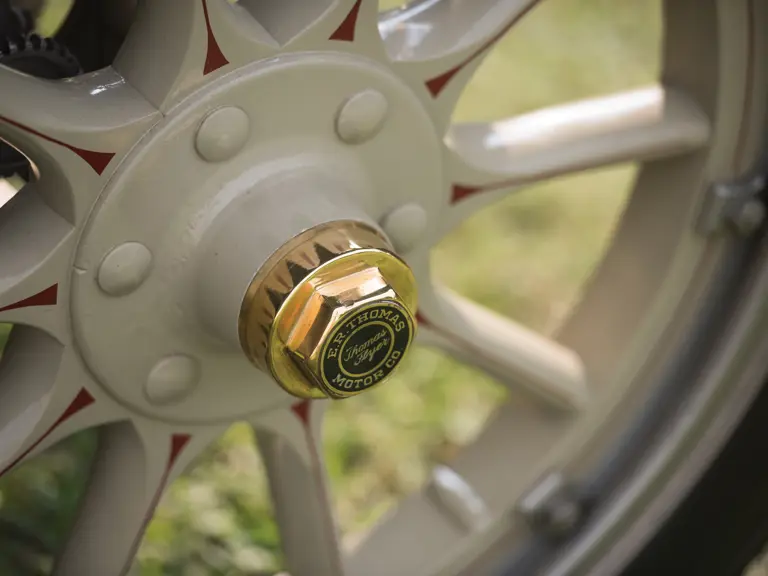
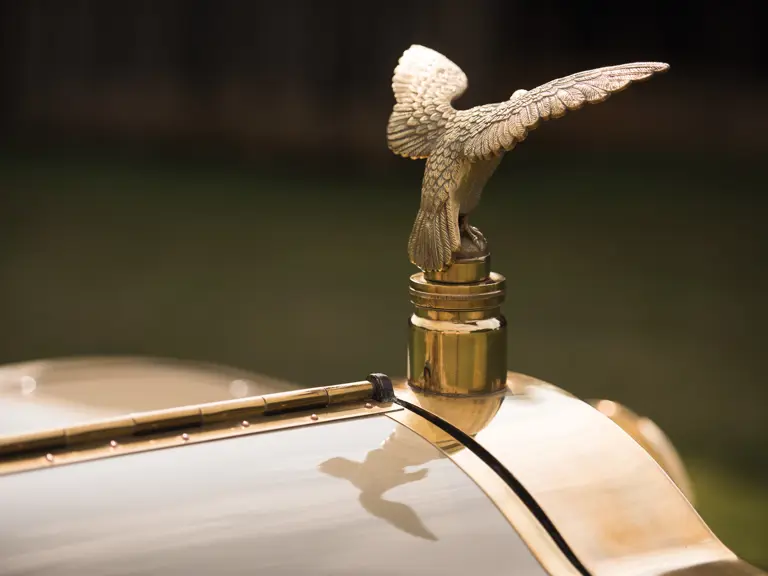
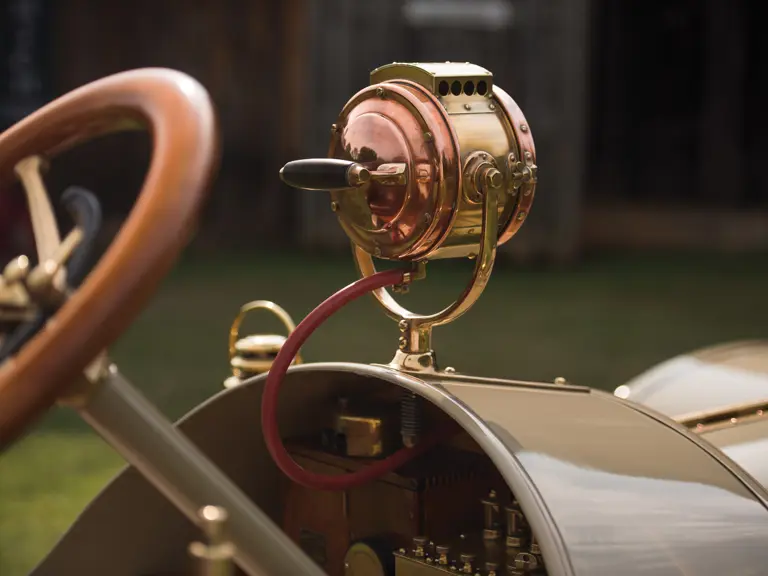
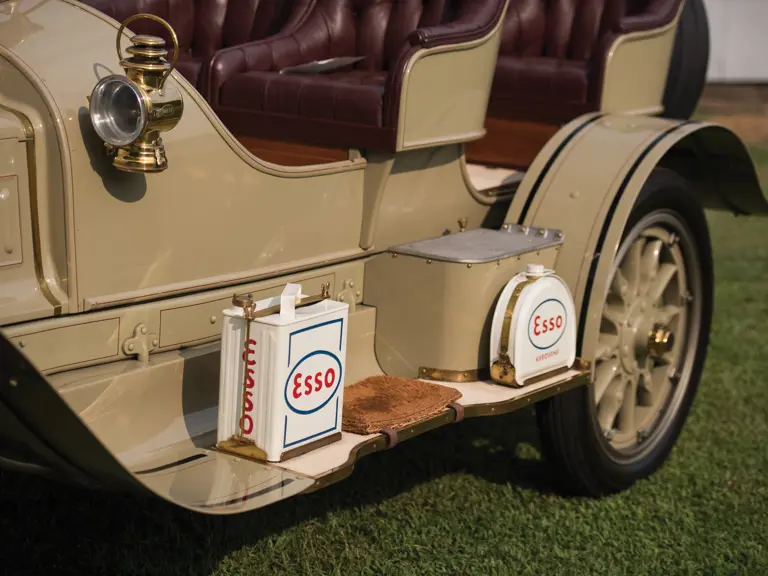

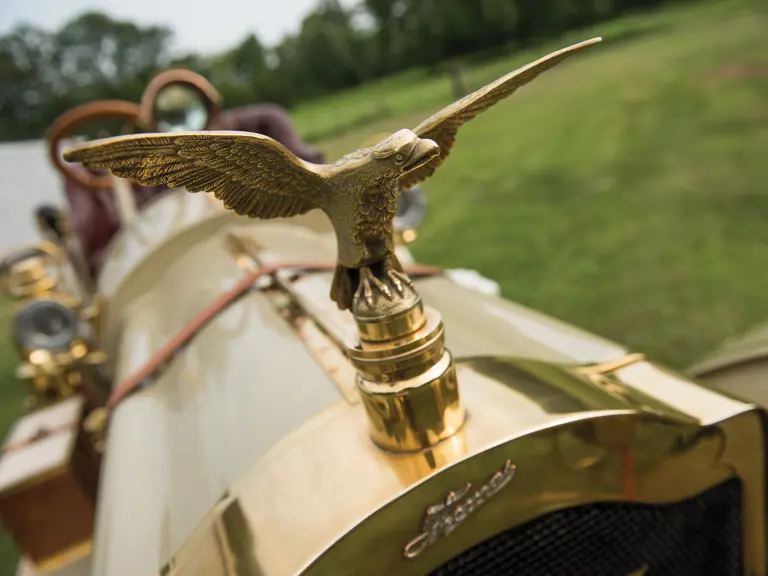
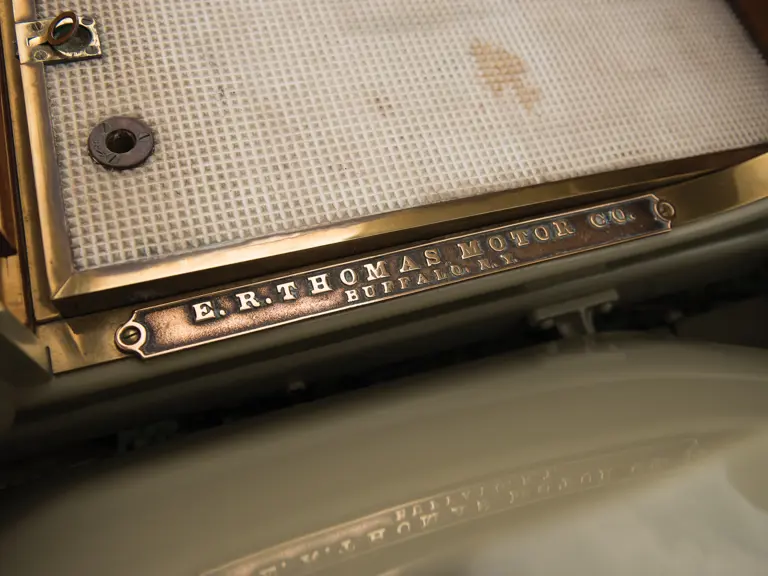
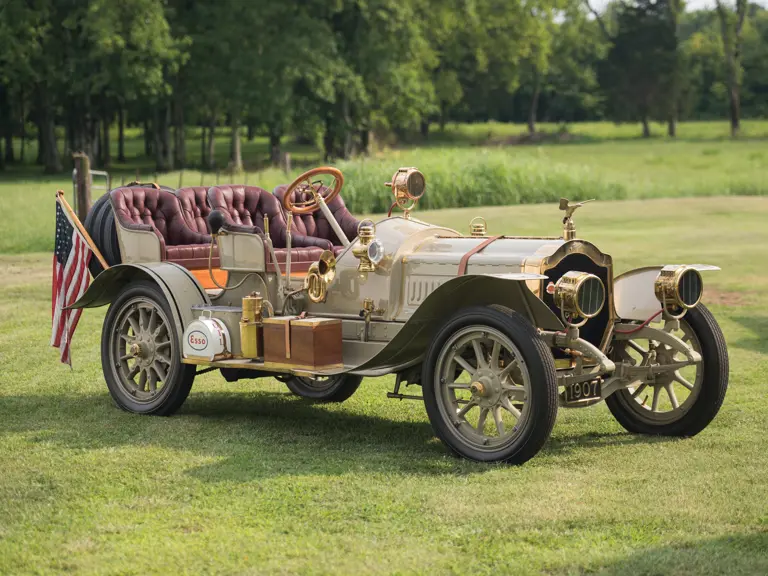
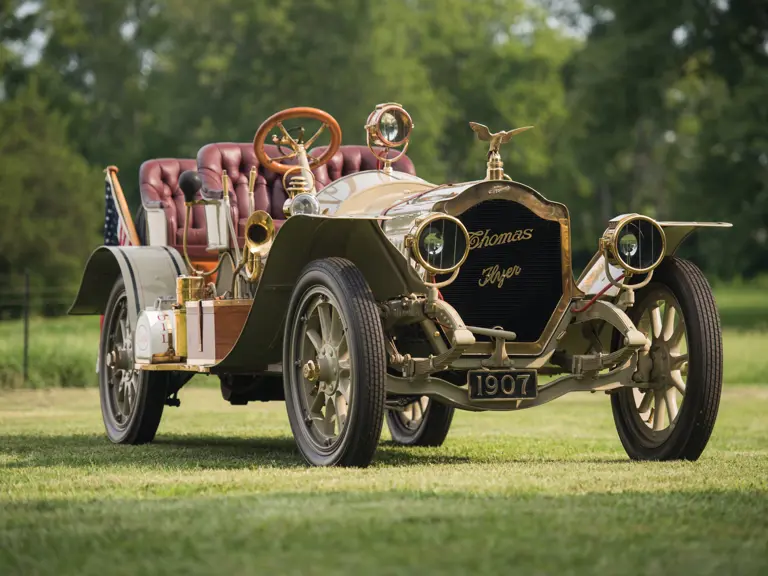

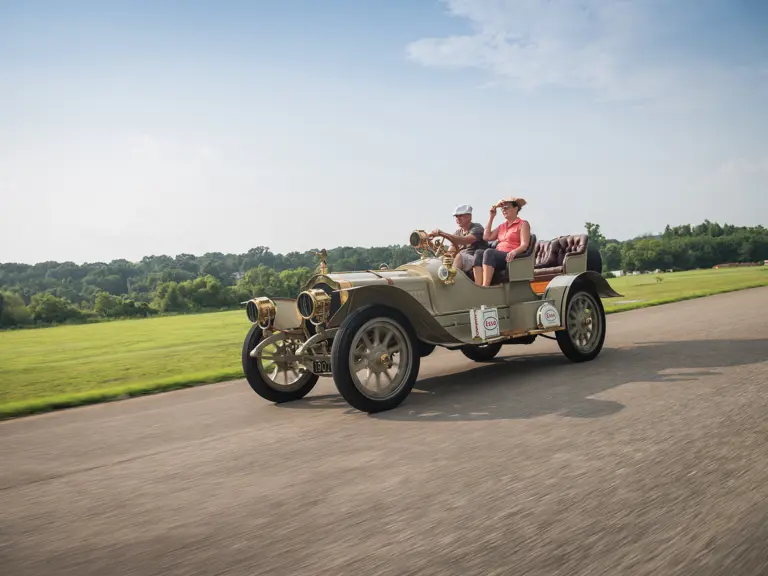
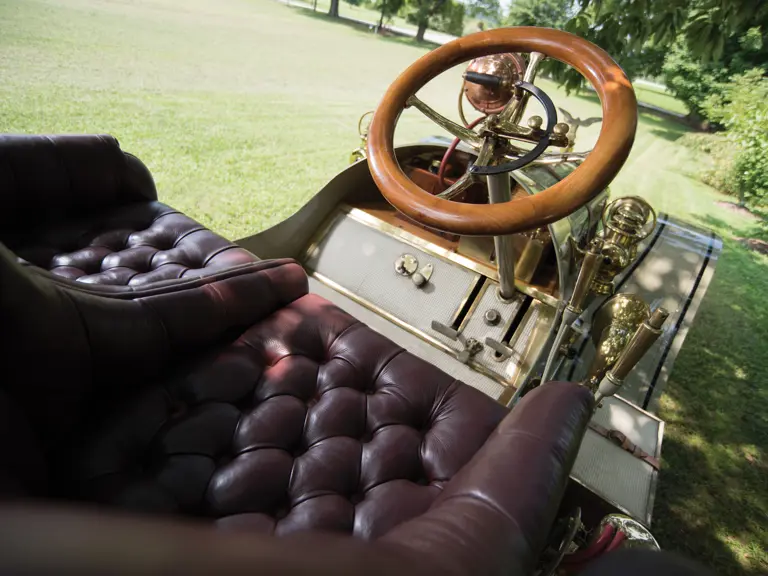
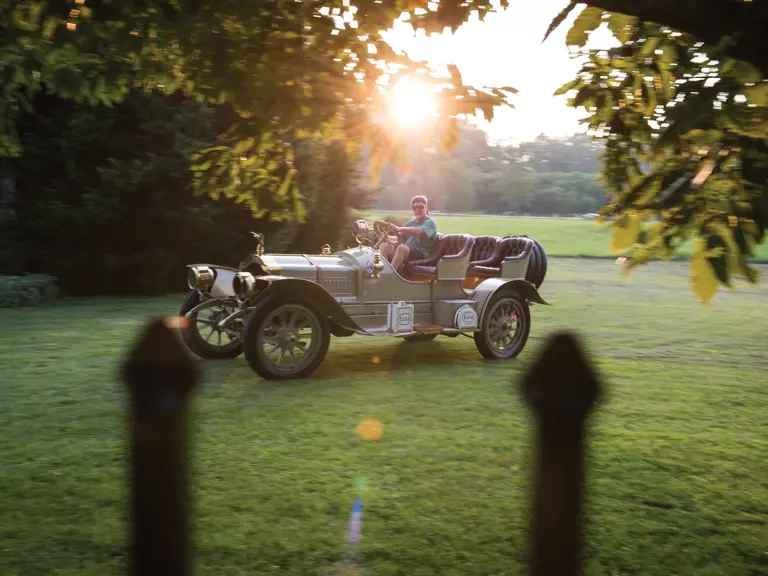
 | Hershey, Pennsylvania
| Hershey, Pennsylvania
